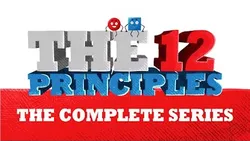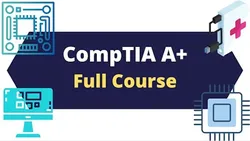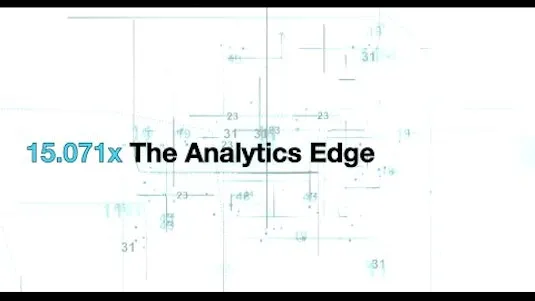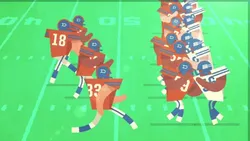
12 Principles of Animation: The Complete Series 
This comprehensive series covers the 12 Principles of Animation, from Squash & Stretch to Appeal. It provides an in-depth look at the fundamentals of animation, such as Anticipation, Staging, Follow Through & Overlapping Action, and more. Through this series, viewers will gain a better understanding of the principles and techniques used to create dynamic and engaging animations. ▼
ADVERTISEMENT
Course Feature
![]() Cost:
Cost:
Free
![]() Provider:
Provider:
Youtube
![]() Certificate:
Certificate:
Paid Certification
![]() Language:
Language:
English
![]() Start Date:
Start Date:
On-Demand
Course Overview
❗The content presented here is sourced directly from Youtube platform. For comprehensive course details, including enrollment information, simply click on the 'Go to class' link on our website.
Updated in [February 21st, 2023]
This course, 12 Principles of Animation: The Complete Series, is designed to help learners understand the fundamentals of animation. It covers the 12 principles of animation, which are the core concepts of animation that have been used for decades. The course covers topics such as squash and stretch, anticipation, staging, straight ahead and pose to pose, follow through and overlapping action, slow in and slow out, arcs, secondary action, timing, exaggeration, solid drawing, appeal, and members shoutouts. Through this course, learners will gain a comprehensive understanding of the principles of animation and how to apply them to their own projects. They will also learn how to create dynamic and appealing animations that will capture the attention of their audience. Additionally, learners will gain valuable insight into the animation industry and the techniques used by professional animators. This course is perfect for anyone looking to learn the basics of animation and create stunning animations.
[Applications]
After completing this course, students can apply the 12 Principles of Animation to their own projects. They can use the principles to create more dynamic and appealing animations. Students can also use the principles to analyze existing animations and identify areas for improvement. Additionally, students can use the principles to create more believable and realistic animations.
[Career Paths]
1. Animator: Animators create the movement and characters in animated films, television shows, video games, and other media. They use a variety of software and techniques to bring characters to life, including 3D animation, motion capture, and traditional hand-drawn animation. Animators must have a strong understanding of the principles of animation, as well as a good eye for detail and a creative imagination.
2. Motion Graphics Designer: Motion graphics designers create animated graphics for television, film, and other media. They use a variety of software and techniques to create dynamic visuals that help tell stories and convey information. Motion graphics designers must have a strong understanding of the principles of animation, as well as a good eye for design and a creative imagination.
3. Visual Effects Artist: Visual effects artists create special effects for films, television shows, and other media. They use a variety of software and techniques to create realistic visuals that help tell stories and convey information. Visual effects artists must have a strong understanding of the principles of animation, as well as a good eye for detail and a creative imagination.
4. Video Game Designer: Video game designers create the characters, levels, and stories for video games. They use a variety of software and techniques to create engaging and immersive experiences for players. Video game designers must have a strong understanding of the principles of animation, as well as a good eye for design and a creative imagination.
The demand for animators, motion graphics designers, visual effects artists, and video game designers is growing rapidly as technology advances and the entertainment industry continues to expand. As the industry grows, so does the need for professionals with a strong understanding of the principles of animation.
[Education Paths]
1. Bachelor of Arts in Animation: This degree program provides students with the skills and knowledge to create animation for film, television, video games, and other media. Students learn the fundamentals of animation, including storyboarding, character design, and 3D modeling. They also learn about the latest trends in animation, such as motion capture and virtual reality.
2. Master of Fine Arts in Animation: This degree program is designed for students who want to pursue a career in animation. Students learn advanced techniques in animation, such as character rigging, motion graphics, and visual effects. They also learn about the history of animation and the latest trends in the industry.
3. Bachelor of Science in Computer Animation: This degree program focuses on the technical aspects of animation. Students learn how to use computer software to create 3D models, animate characters, and create special effects. They also learn about the principles of animation, such as timing and staging.
4. Master of Science in Animation and Visual Effects: This degree program is designed for students who want to specialize in the field of animation and visual effects. Students learn how to create realistic 3D environments, animate characters, and create special effects. They also learn about the latest trends in the industry, such as motion capture and virtual reality.
Course Provider

Provider Youtube's Stats at AZClass
Discussion and Reviews
0.0 (Based on 0 reviews)
Explore Similar Online Courses

Excel 2019 VBA Beginner Tutorial

CompTIA A+ Certification Full Video Course for Beginners

Python for Informatics: Exploring Information

Social Network Analysis

Introduction to Systematic Review and Meta-Analysis

The Analytics Edge

DCO042 - Python For Informatics

Causal Diagrams: Draw Your Assumptions Before Your Conclusions

Whole genome sequencing of bacterial genomes - tools and applications

Simple Character Animation

Introduction to Cinema 4D: A Beginner& Animation Guide


Start your review of 12 Principles of Animation: The Complete Series